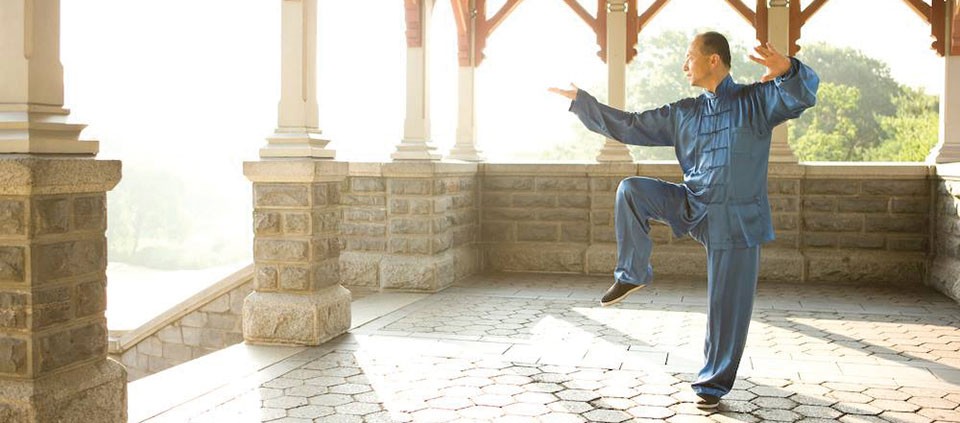Taijiquan: The Art of Nurturing, the Science of Power

The word “taiji” is an ancient Daoist philosophical term symbolizing the interaction of yin and yang, which are opposite manifestations of the same forces in nature. It is helpful to think of yin and yang as complementary opposites—each necessarily relies upon, and gives birth to, the other. For example, a fundamental theory of Taijiquan is that hardness comes from softness and quickness comes from slowness. In Taiji practice, emphasis is placed on relaxing the body and calming and focusing the mind. Taiji form movement is performed slowly, accentuating the intention, mechanics, accuracy, and precision of the motion. By practicing in accordance with Taiji principles of softness and slowness, the practitioner will paradoxically begin to experience a quality of hardness and strength and efficiency of movement that is significantly different from that of ordinary natural ability.
The martial arts of China are typically categorized as either “internal” or “external.” Taijiquan downplays brute strength and natural ability and emphasizes learned motor skills, nurturing, and the accumulation of hardness through softness, and thus it is considered an internal martial art. Other popular internal martial arts include Xinyiquan, Baguazhang, and Yiquan. Classification of a particularly art as internal or external is useful in describing beginning training practices to novices, but it is ultimately an oversimplification of the martial arts. In their complete form many, if not most, external or “hard” styles also eventually seek to develop and incorporate an internal or “soft” aspect in their practice. Similarly, all practices of the internal martial arts are intended to develop “gong,” the physical aspect of which includes improvements in strength and power. In the classical literature, Taijiquan is referred to as the “science of power.” And so it can be seen that the practices of internal and external marital arts eventually merge toward common ground (if not unification).
While Taijiquan was originally created as a martial art, it is also, importantly, a holistic art that develops and informs one’s life. Physical, mental, and spiritual components are all integral to its practice. This must be thoroughly understood to grasp the complexity of Taijiquan, to achieve high levels of skill, and to obtain the full benefits of practice. The balance of yin and yang, which is a central theory of the art, explains the linking of spiritual (yin and internal) and martial (yang and external) aspects.
I would also characterize Taiji as a living and growing art. It is not static or restricted to traditions and understanding of past generations, but continues to be enriched by thoughtful insights of each successive generation. Further, as with all art forms, Taiji is ultimately a deeply personal experience and expression of one’s feelings, outlook, and understanding of life. One’s inner spirit is not only nurtured and molded by Taiji practice, but also is inherently reflected in practice. The practitioner’s spirit and competence are mirrored first in the mechanical movements of the form and later, as one assimilates the lessons from practice, in one’s entire relation and interaction with the world.
The fact that Taiji is a personal, living, and growing art is apparent in the different “styles” that have developed over the years. I believe that Taiji is a living art that cannot possibly be limited to the understandings of previous generations.
Find out about upcoming programs with Yang Yang at Kripalu.
Excerpted with permission from Taijiquan: The Art of Nurturing, the Science of Power, © 2005, by Yang Yang, PhD, with Scott A. Grubisich.
Yang Yang, PhD, is the founder of the Center for Taiji and Qigong Studies and a researcher and tai chi/qigong clinician, formerly at Memorial Sloan-Kettering Cancer Center in New York City.
Full Bio and Programs